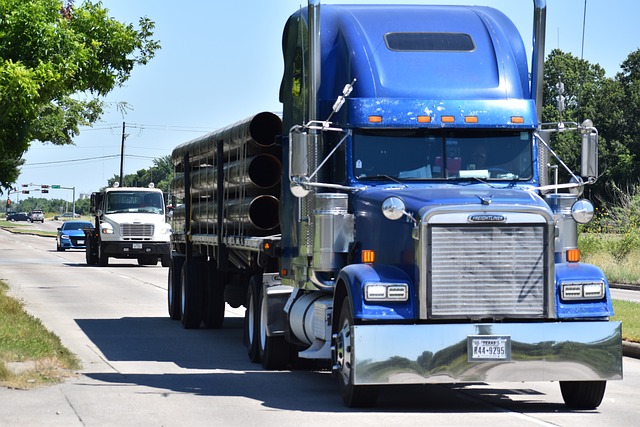Fleet employee coverage is crucial for effective return-to-work programs, addressing physical and mental health needs through tailored support like modified job duties, ergonomic equipment, mental health services, and flexible work arrangements. Successful strategies include individualised assessment, specific training on new technologies and procedures, counseling, and gradual return plans with assigned mentors and regular manager check-ins. Measuring program effectiveness via feedback scores, training completion rates, and KPI improvements is essential for continuous improvement and enhanced employee satisfaction, productivity, and retention.
In today’s dynamic work environment, effective return-to-work (RTW) programs are essential for maintaining employee engagement and productivity. This article offers professional guidance on managing RTW initiatives, focusing on a crucial aspect often overlooked: fleet employee coverage. By understanding the unique needs of mobile workforce members, organizations can design comprehensive strategies that ensure a smooth transition back to the office or field. We’ll explore key components from program design to measurement, emphasizing the significance of fleet employee coverage for long-term success.
Understanding Fleet Employee Coverage: A Cornerstone of Effective Return-to-Work Programs

In the realm of return-to-work programs, understanding fleet employee coverage is a cornerstone that cannot be overlooked. Fleet employees, often facing unique challenges and demands due to their roles, require tailored support to seamlessly transition back into the workforce. Comprehensive coverage ensures these workers receive the necessary resources and accommodations, addressing any physical or mental health considerations arising from time away.
Effective return-to-work strategies involve assessing each employee’s specific needs, especially those in fleet roles. This may include modifying job duties, providing ergonomic equipment, offering mental health support, or even arranging flexible work arrangements. By recognizing and accommodating these unique requirements, organizations can create an inclusive environment, enhance employee morale, and ultimately foster a successful return to productivity.
Designing Comprehensive Return-to-Work Strategies: Key Components for Success

Designing effective return-to-work strategies is crucial for organizations aiming to ensure a smooth transition for employees back into the workforce after an absence, whether due to injury, illness, or personal leave. A comprehensive approach should encompass several key components to be truly successful.
Firstly, tailored programs that cater to individual needs are essential. This includes assessing each employee’s capabilities and limitations upon their return. For instance, fleet operations with a high focus on safety will require specific training for employees who have been off the road, ensuring they’re up-to-date with industry regulations and familiarized with new technologies or procedures. Additionally, providing support services such as counseling or access to wellness programs can aid in addressing any psychological barriers that may impact an employee’s readjustment. Fleet employee coverage should also consider flexible work arrangements, allowing for gradual return-to-work plans and accommodating varying levels of workload comfort.
Implementing Supportive Onboarding and Training Processes for Optimal Employee Reintegration

Effective return-to-work programs begin with supportive onboarding and training processes tailored to each employee’s unique situation. For those in fleet operations, ensuring comprehensive fleet employee coverage is paramount. This involves familiarizing returning workers with updated equipment, procedures, and safety protocols, especially if technology or industry standards have evolved during their absence. A structured training program that combines theoretical knowledge with hands-on practice ensures employees feel confident and prepared to resume their roles.
Creating a welcoming environment further fosters successful reintegration. Assigning mentors or buddies who can guide new comers through day-to-day tasks, answer questions, and provide support can significantly enhance the transition. Regular check-ins during the onboarding period also allow managers to address any challenges promptly, ensuring employees feel valued and supported throughout their return journey.
Measuring and Optimizing Program Effectiveness: Ensuring Long-Term Employee Engagement and Productivity

Measuring and optimizing program effectiveness is a crucial step in ensuring long-term employee engagement and productivity within return-to-work initiatives. By implementing robust evaluation methods, organizations can assess the impact of their programs on worker satisfaction, retention rates, and overall performance. Key metrics to track include employee feedback scores, completion rates for training modules, and improvements in key performance indicators (KPIs) related to job proficiency. Regular data analysis allows for identifying areas that require enhancement, be it refining program content, improving communication strategies, or tailoring support mechanisms to specific fleet employee coverage needs.
This data-driven approach enables continuous improvement, fostering an environment where return-to-work programs evolve and adapt to meet the dynamic needs of the workforce. As a result, employees experience greater job satisfaction, enhanced productivity, and improved retention, contributing to the organization’s overall success and competitiveness in the market.
Professional guidance on managing return-to-work programs is essential, especially for organizations with a focus on fleet employee coverage. By understanding the key components of effective strategies, implementing supportive onboarding processes, and measuring program effectiveness, businesses can ensure successful reintegration that fosters long-term employee engagement and productivity. These steps are crucial in navigating the complexities of modern workforce transitions, ultimately revolutionizing return-to-work experiences.
